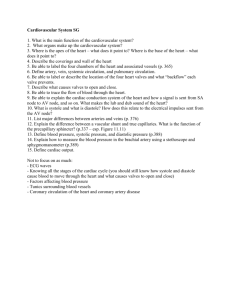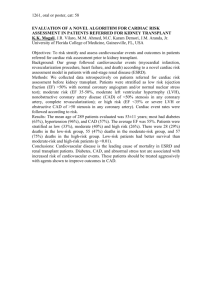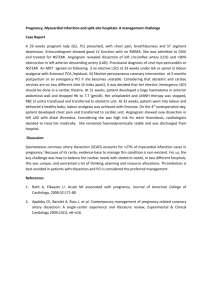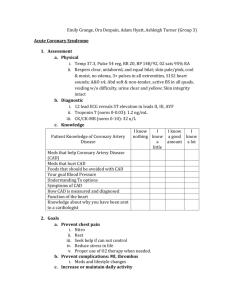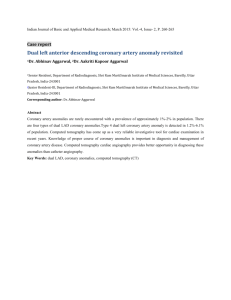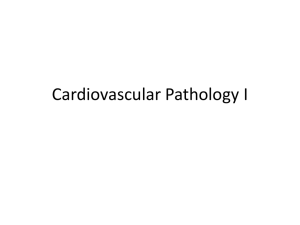Prevention and Treatment of Cardiovascular Disease
advertisement
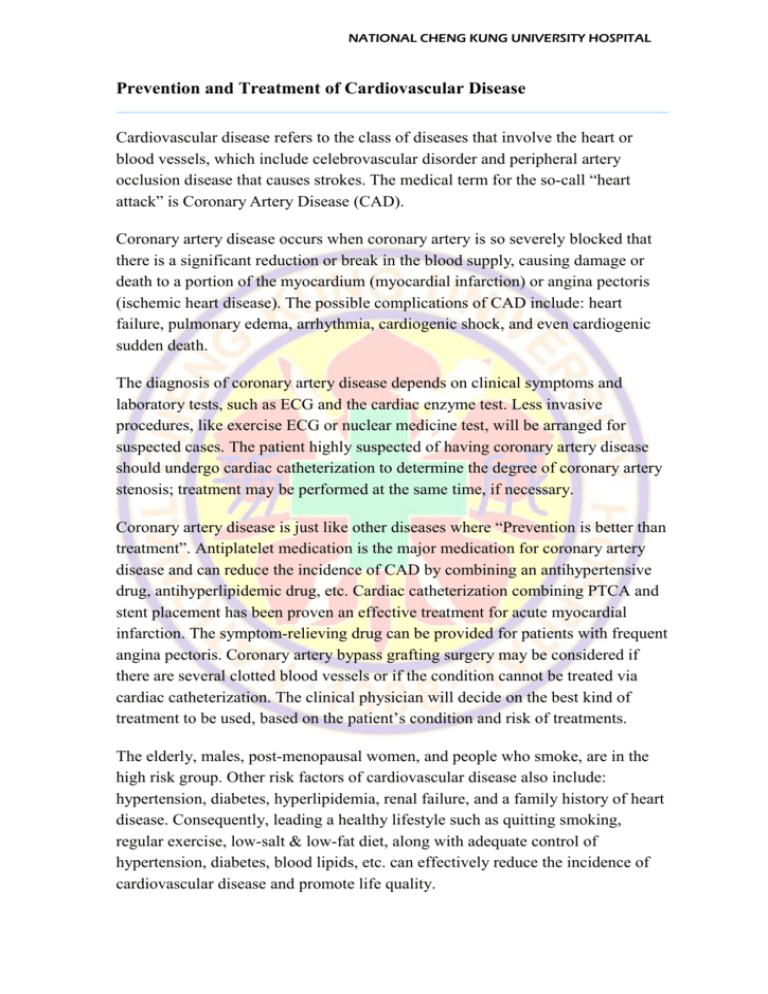
NATIONAL CHENG KUNG UNIVERSITY HOSPITAL Prevention and Treatment of Cardiovascular Disease Cardiovascular disease refers to the class of diseases that involve the heart or blood vessels, which include celebrovascular disorder and peripheral artery occlusion disease that causes strokes. The medical term for the so-call “heart attack” is Coronary Artery Disease (CAD). Coronary artery disease occurs when coronary artery is so severely blocked that there is a significant reduction or break in the blood supply, causing damage or death to a portion of the myocardium (myocardial infarction) or angina pectoris (ischemic heart disease). The possible complications of CAD include: heart failure, pulmonary edema, arrhythmia, cardiogenic shock, and even cardiogenic sudden death. The diagnosis of coronary artery disease depends on clinical symptoms and laboratory tests, such as ECG and the cardiac enzyme test. Less invasive procedures, like exercise ECG or nuclear medicine test, will be arranged for suspected cases. The patient highly suspected of having coronary artery disease should undergo cardiac catheterization to determine the degree of coronary artery stenosis; treatment may be performed at the same time, if necessary. Coronary artery disease is just like other diseases where “Prevention is better than treatment”. Antiplatelet medication is the major medication for coronary artery disease and can reduce the incidence of CAD by combining an antihypertensive drug, antihyperlipidemic drug, etc. Cardiac catheterization combining PTCA and stent placement has been proven an effective treatment for acute myocardial infarction. The symptom-relieving drug can be provided for patients with frequent angina pectoris. Coronary artery bypass grafting surgery may be considered if there are several clotted blood vessels or if the condition cannot be treated via cardiac catheterization. The clinical physician will decide on the best kind of treatment to be used, based on the patient’s condition and risk of treatments. The elderly, males, post-menopausal women, and people who smoke, are in the high risk group. Other risk factors of cardiovascular disease also include: hypertension, diabetes, hyperlipidemia, renal failure, and a family history of heart disease. Consequently, leading a healthy lifestyle such as quitting smoking, regular exercise, low-salt & low-fat diet, along with adequate control of hypertension, diabetes, blood lipids, etc. can effectively reduce the incidence of cardiovascular disease and promote life quality. NATIONAL CHENG KUNG UNIVERSITY HOSPITAL


